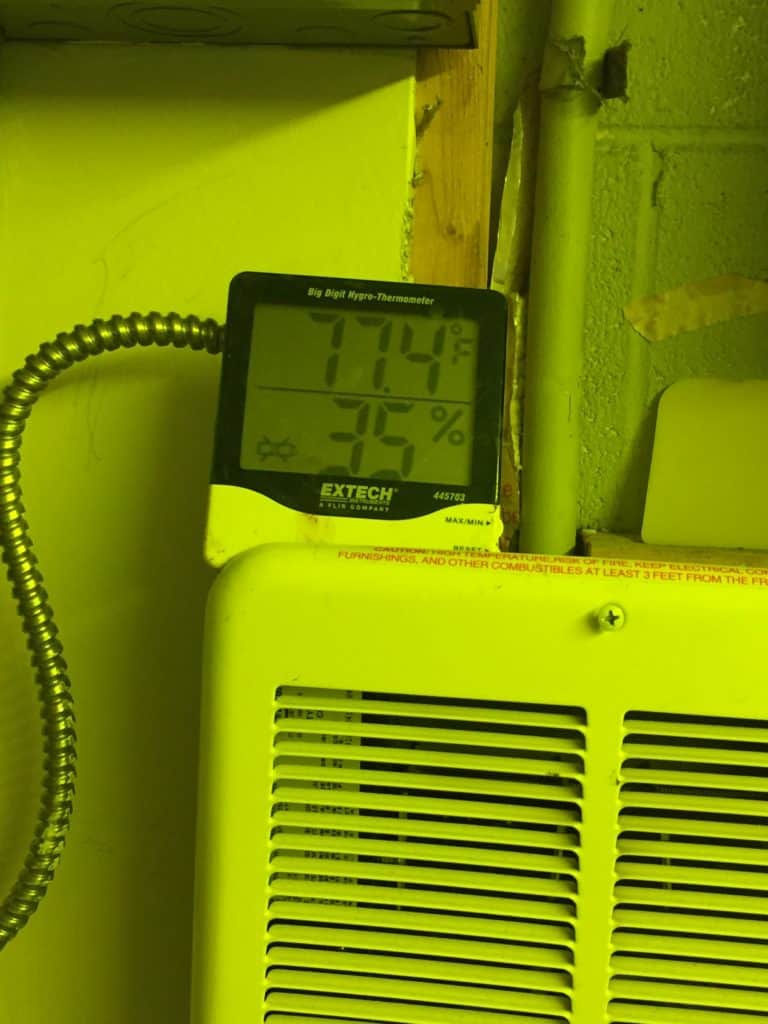Pinholes
Pinholes piss off customers when you send shirts out without you having found them and removed them from your prints. They waste time and money and brain cells with shooting them out with dry cleaning fluid. They make you ruin most garment-dyed shirts (not Comfort Wash or most SanMar) because they can’t be shot out.
Why do you have pinholes in your screens?
Here are many possible reasons:
1. Dirt: On your screens, on your films, in your emulsion on the glass of your exposure unit. Dirt is your real enemy and it only has to be the size of the smallest halftone to screw you up. Dirt reads the same as a dot and will make a hole that ink will pass through.
2. Bubbles: If you have a bubble in your emulsion, it can turn into a pinhole. The causes of bubbles are screens that aren’t dry when coated, emulsion that has not sat for long enough after mixing, or a coating stroke that is too fast.
3. Crappy Stencil Thickness: If you put too few coats of emulsion on a screen it doesn’t directly make pinholes, but it aggravates and increases all the other factors. Even if you are doing the recommended coats, if you are not applying them properly the stencil can be too thin.
4. Bad Reclaim: If you don’t fully and completely reclaim then you can either have dirt that will prevent exposure, or you can have grease or chemcials that will prevent proper adhesion of the emulsion.
5. Underexposure: If you underexpose your screens you can get premature breakdown and pinholes.
6. Bad Emulsion: If you use emulsion made poorly you can get pinholes. You can get undissolved solids in it, bad diazo or any number of other issues that will give you more pinholes. If you have diazo that is too old before you use it, diazo that is improperly dissolved (tough to seen in yellow light,) or diazo that has been mixed into the emulsion for too long (and the highter the temperature it sits at, the faster it fails) you can get pinholes.
There are also things that will aggravate the above problems. If you print with super hard squeegees and/or with lots of pressure you will break out the weak spots in your screens into pinholes.
How to Avoid Pinholes:
1. DTS or Laser Exposure Systems: If you go to the modern methods of a DTS (Direct to Screen) you avoid pinholes caused by films because you don’t use films. If you also use a point source light in conjunction then you also avoid dirt on the glass because there is no glass. The new Saati laser system avoids dirty films and glass as well.
2. Cleaning and more Cleaning: If you are using films then keep them clean and handle and file them in a way that keeps them clean, or clean them well before use. Many shops have glass cleaner by the gallon and gallon and wipe down the exposure unit or vacuum table glass constantly.
3. Thorough Reclaiming: Folks cleaning screens and reclaiming them are too often not respected members of our shops. This is foolish because if your screens are not cleaned properly and dried properly then you are doomed to pinholes and a host of other problems.
4. Good Coating Methods: Get a good scoop coater and keep it in excellent shape. Let your emulsion sit at least a half hour after mixing in diazo before coating. Coat at an even slow speed and use the recommended number of coats your manufacturer recommends. If you don’t have a trusted vendor, get one as you will be doomed trying to figure all this crap out all by yourself.
5. Proper Exposure: This is where your emulsion vendor should assist you and give you a step wedge test and information so that you can establish good exposure times for your emulsion for every mesh that you use. Also note that if your bulb still works but is getting weak it can screw up your exposure times.
6. Good Emulsion: I see many shops trying to save a buck with cheap emulsions. Unless your time is worthless, this is the dumbest idea you could ever had. Get a reputable supplier for both the good product and for the good advice you will be needing. Badly made emulsion will cause pinholes to occur. I will not cover why that is in this article, but it is a fact.
7. Dry Baby Dry: Your reclaimed screens need to be fully dry or you will have pinholes caused by the moisture in the mesh. Too often folks think drying time if the only factor. It is not. Get something that reads the humidity and then duh, monitor it. If your screen drying happens in air that is over 50% humidity or more they are not really dry and you will have problems.
You also will have issues if your coated screens don’t fully dry. Again, it is a factor of time, but the room has to be dry.
You will also have issues if your exposed screens are not fully dry or are stored in a humid environment.

Tiny Bubbles one more time…


Thanks Rick! Loving the Forum. Lots of big help.